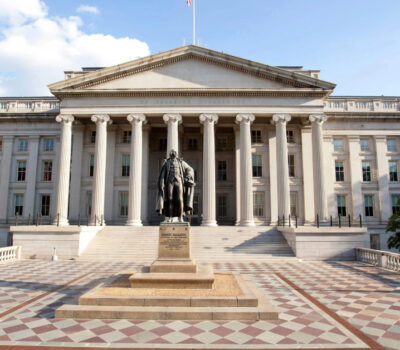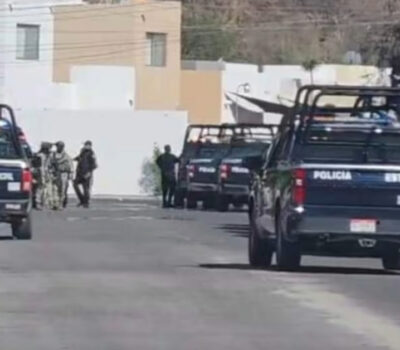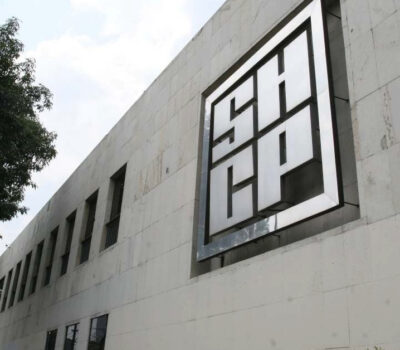Mention Mexico and you usually hear Cancun, Cozumel and earlier ports I used to fly into as an airline pilot like Acapulco, Puerto Vallarta and Zihuatanejo with the sand and beaches. But you don’t know the essence of Mexico until you visit the heart of it, Mexico City.
In previous columns, I’ve mentioned slow-paced, courteous drivers of other cities. In Mexico City, I recommend a taxicab. You will experience all the thrills you want riding in the back of one.
I previously mentioned that in Puerto Rico you will have no problem speaking to the locals. Here, outside of hotels, you will need basic understanding of Spanish phrases and a speaking knowledge of monetary denominations. A pocket translation guide may help. But you will feel secure in this city as armed guards are everywhere, and in a week’s time we saw no evidence of problems.
Mexico City abounds with rich history, architecture, music, giant cathedrals, all-day museums and, yes, ladies, muchas buenas compras or much good shopping.
Let’s start with the cathedrals. Mexico City is a very devout city. You may see decorative processions many times, possibly to Catedral Metropolitana, one of the largest cathedrals in the world with tall golden altars. Begun in 1573, it took three centuries to complete and is located to one side of the Zocalo, which itself is one of the largest squares in the world. More about that later.
Colorful, costumed pilgrimages may proceed north of the city to the National Shrine of Mexico, the Basilicas of Our Lady of Guadalupe. These basilicas are visited by millions of devotees and tourists annually.
These and many other buildings are sinking as Mexico City was built on one giant lake bed and these buildings are of considerable weight. Buildings have been stabilized for this reason and because of the rare occurrence of earthquakes.
You can spend an entire day in the National Museum of Anthropology — the Museo Nacional de Antropologia. It includes many outdoor gardens with stone sculptures, making you feel as though you’ve uncovered jungle antiquity. Across town, performing arts and exhibits are found in the very beautiful Palacio de Bellas Artes. Nearby is the House of Tiles, originally built as a home in the 1500s.
I mentioned the expansive Zocalo, the public square, formally the Plaza de la Constitucion. At 6 p.m. every day, hundreds of citizens and tourists assemble to watch the lowering of the national flag. The regular army and the red berets march out with blaring bugles and beating drums. This is no small event as the flag itself is 150 feet long. As all of this was taking place, across the square — almost unnoticed — were two men lowering a very large flag atop the National Palace. This block-long building was rebuilt in 1692 and is the seat of the federal executive government.
You will need a cab driver as much of the street layout is segmented and triangulated. But as you ride, you get an opportunity to view — as you would not driving — a multitude of monuments along the avenues. Some of these are monuments to the Revolution, small pyramids with Aztec warriors, the tall spire of the Angel of Independence with its golden angel atop, statues of Simon Bolivar and various generals and presidents.
And now you will need a guided bus tour to the pyramids of Teotihaucan some miles north of the city. This area was reported to be the oldest city in North America. The tall pyramids were once buried under giant mounds of dirt. Then, when a railroad was constructed nearby and dirt was needed, they were discovered. The largest pyramid is known as that of the sun, the second largest is known as that of the moon. Don’t ask me what the third was called. And, of course, there are legends of human sacrifice. Rows of stone mounds were uncovered, and your guide will tell you that more than 200 temples existed at this site. Of course you will have to buy a small black obsidian souvenir pyramid.
Now your pyramid guide will take you to a restaurant. But before you enjoy a true Mexican version of great tortilla soup, enchiladas and crisp chalupas, they will take you to the gardens. There you will receive a lecture on the agave cactus, its pointed ends long ago used for spear tips, its fibers used for clothing and, of course, its nutritional agave juice.
But you know from reading my columns that I wouldn’t stop there. You see, distilled agave is tequila. While enjoying those enchiladas, the restaurant will entice you between food courses with several courses of various distillations and ages of tequila. And may I suggest on your tour of Mexico City that you begin your breakfast with coffee and “tequila sunrises,” and finish your day with straight tequila or margaritas.
Happy trails.
JIM STODOLA, a columnist writing about his travels, can be reached at [email protected].
Mention Mexico and you usually hear Cancun, Cozumel and earlier ports I used to fly into as an airline pilot like Acapulco, Puerto Vallarta and . . .










